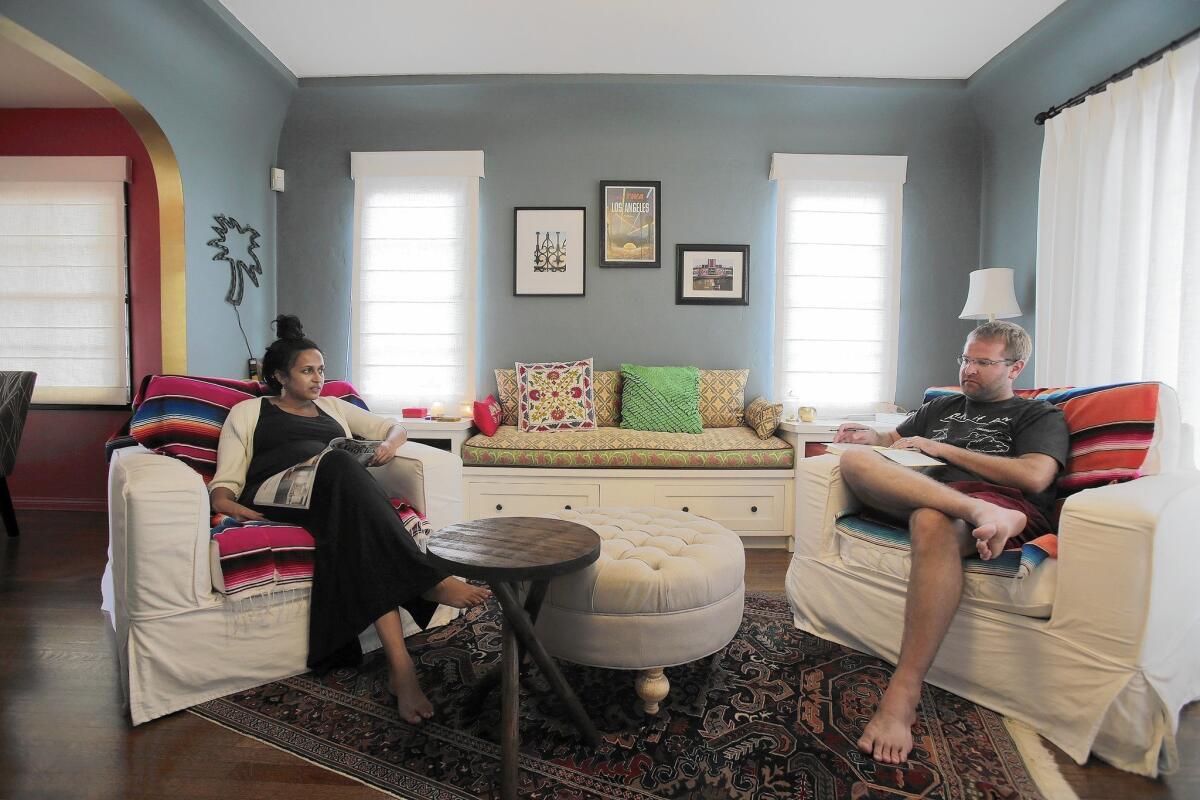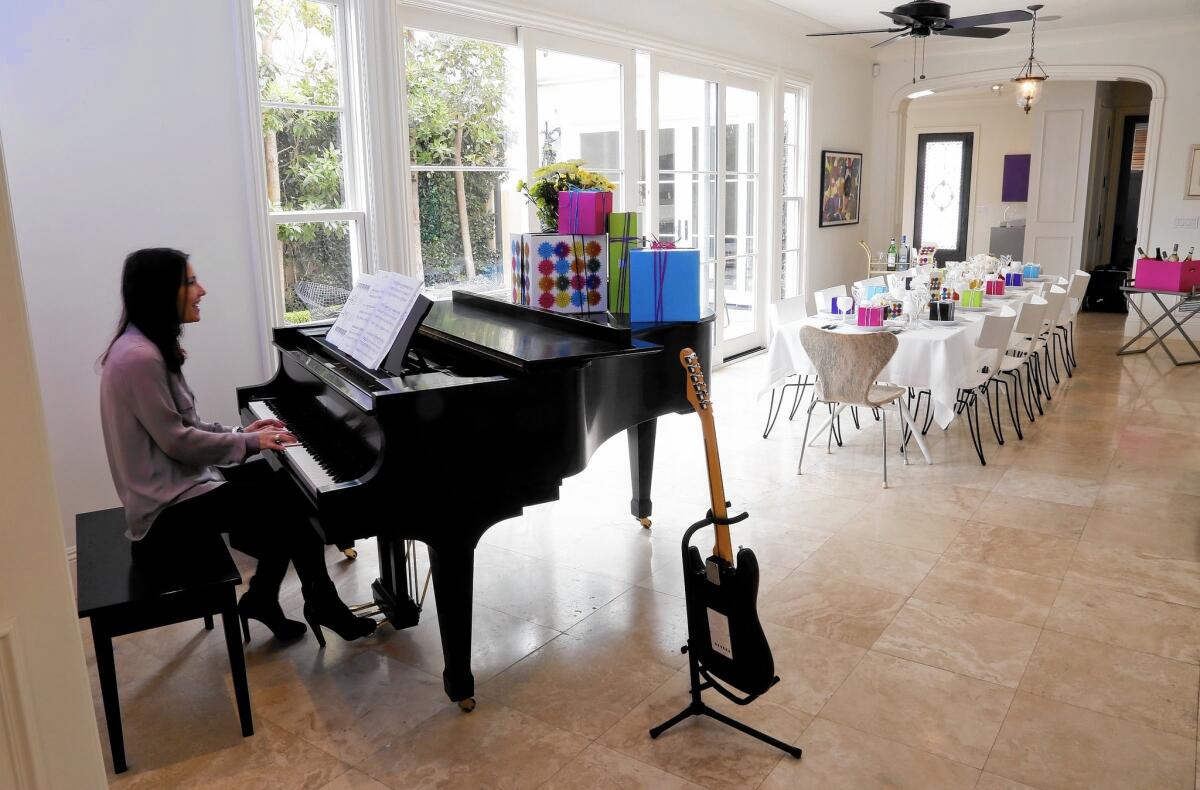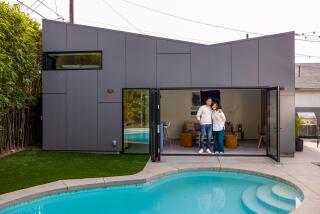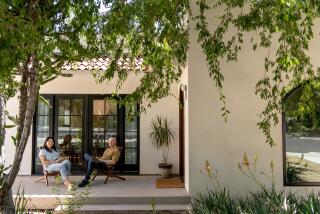Is the dining room dead? See the fun ways other people repurpose theirs:

Almost from the moment that the Cunninghams saw the Los Feliz home that they would eventually buy, they knew that they wouldn’t use the spacious dining room for its intended purpose.
“There was a breakfast nook, which we would eat in,” Vipula Cunningham says. “Which made the dining room a blank slate.”
She and her husband, Daniel, enlisted the help of Los Angeles interior decorator Karen Vidal to repurpose the room into a den for media and entertaining. They installed built-ins at one end to hold the TV, books and keepsakes, put a bench with cushions at the other end and brought in comfortable armchairs. When they entertain they set up their dining table on the deck in the backyard or gather around the large coffee table in the living room.

How Mike and Jayne Flynn quickly converts their dining room to a music room.
“We typically don’t have dinner parties where we all sit around the table,” says Cunningham, who works in property management. “We put food everywhere, and people disperse.”
Once an essential component in a home, the dining room is now being regarded as something of a waste of space.
The trend can be traced back to the rise in popularity of the great room and the facts of modern living — working parents who come home at different times, kids on different schedules. But now, dedicated dining rooms are being replaced with something that will actually be used: an office, TV room, even a guest suite.
For West L.A. resident Michael Keith, having both kids in college led to the decision to knock down the wall between the dining room and kitchen in the 2,100-square-foot home he has owned for 15 years. The kitchen will be expanded, a long table will take up the space where the wall used to be and the family can dine there or outdoors.
“For all these years we have had a room we don’t use,” he says. “I’d rather be able to use and enjoy a larger percentage of the home, rather than have a room you just walk through in order to get somewhere else. With that wall coming down, the whole flow of the house will change.”
Both for everyday eating and dinner parties, the action is moving from a dining room to just about anywhere else.
“People are wanting to make their rooms a lot more multi-purpose, and that includes an extension into the outdoors,” according to Russ Diamond of Snyder Diamond, which specializes in outfitting high-end kitchens, so he sees firsthand where people decide to settle in for a meal.
“Lifestyles are dictating this,” he says. “Everybody is so busy. Everything is more casual. People are thinking differently about how and where they eat.”
Jayne and Mike Flinn did away with a formal dining room when they moved into their 5,000-square-foot Newport Beach home in 2011. Instead, they have what they call a “transitional dining room.” It’s a stone-floored multi-purpose solarium/music room that holds a baby grand piano, guitars and artwork. It becomes a formal dining space only when need be. A closet in the room holds everything they need to convert the space, including folding tables, linens, crystal and china.
“We have five kids and that room is our special place for Thanksgiving and dinner parties,” said Jayne Flinn, who, with her husband, owns the gift box company Boxfli. “But on a normal day-to-day basis, the kids can play jacks on the floor” and “skateboard or roller-skate through.”
Bryan Henson, president of Allen Construction, which builds homes in and around Los Angeles, says that clients who are doing a kitchen remodel almost invariably are getting rid of the dining room in the process.

“They’re usually small and blocked off, and that’s not how people want to live anymore,” he says. “So if they’re doing a remodel anyway, they knock down the dining room walls. It’s a more cost-effective project and can have a drastic effect on the whole home.”
It’s a trend evident on Houseplans.com, which allows users to customize home plans: The dominant stock home design on the site these days includes what company Chief Executive James Roche describes as a “barn room.”
“It’s a kitchen with an island and a table, and includes the living and family rooms. It becomes the heart of the house,” Roche says.
And he says that even holiday dinners — the times when the dining room is most used — don’t have to be sacrificed because the dining room no longer exists. And they might even be merrier for lack of a formal table. Bring in card tables, or rent tables, tie it all together with tablecloths and runners and, Roche says, “you can seat 20 instead of 12 but everyone is making noise and having fun. If that table happens to be six feet from the kitchen island, who cares?”
Removing barriers
What does the trend away from the traditional dining room say about the ritual of gathering together as a family, setting a proper table and enjoying a meal?
“There’s no question that there’s a move away from a nuclear family sitting down together and sharing a meal,” says Michael Hebb, a teaching fellow at the University of Washington who is co-writing a book on table rituals, mindfulness and neuroscience.
But Hebb says combining the acts of cooking, eating and entertaining can actually be healthful for family and friendships.
“There’s something really great about taking out the barriers between the kitchen and the eating and living spaces,” he says. “The old model was based on some aristocratic notion that cooking is something that somebody else does for us. Instead, I’ve found that the closer the proximity between eating and dining, the more real and authentic the experience is.”
— Kavita Daswani
ALSO:
Photos: Home Inspiration: Dining rooms
7 ideas for using chalkboards, chalkboard paint at home
Say ‘Hello’ to the Lionel Richie Home collection


